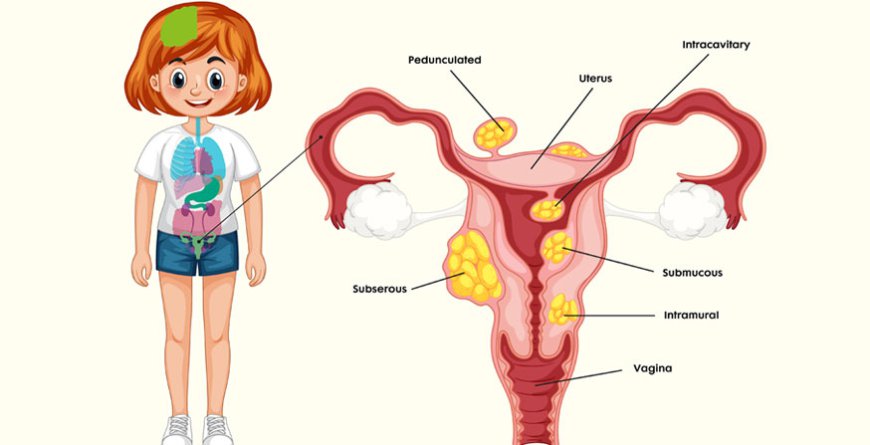Effective Uterine Fibroids Treatment Options for Women
Learn about effective uterine fibroids treatment options available for women. Discover both non-surgical and surgical solutions for fibroid removal with Flowcare, a leading medical provider.

Understanding Uterine Fibroids
Uterine fibroids, also known as leiomyomas or myomas, are non-cancerous growths that develop in or on the uterus. These growths are made of muscle cells and fibrous tissues and can vary in size, from as small as a pea to as large as a grapefruit. While many women with fibroids experience no symptoms, others may suffer from heavy menstrual bleeding, pelvic pain, or fertility problems.
Fibroids are a common health issue, affecting up to 80% of women by the age of 50. Though benign, the symptoms they cause can severely impact a woman's quality of life. Fortunately, various uterine fibroids treatment options are available to alleviate symptoms or remove fibroids entirely.
Symptoms of Uterine Fibroids
The symptoms associated with uterine fibroids vary depending on the size, location, and number of fibroids present. Common symptoms include:
- Heavy or prolonged menstrual periods
- Pelvic pain or pressure
- Frequent urination
- Difficulty emptying the bladder
- Constipation
- Back or leg pain
- Pain during intercourse
- Reproductive issues, including infertility or recurrent miscarriage
If you experience any of these symptoms, it’s important to seek professional medical advice. At Flowcare, we specialize in diagnosing and treating fibroids, ensuring you receive the best possible care for your condition.
Uterine Fibroids Treatment Options
There are several ways to treat uterine fibroids, ranging from medication to surgical interventions. The choice of treatment depends on various factors such as the size of the fibroids, symptoms, your age, and whether you plan to have children. Here’s a look at the most common treatment options available.
1. Medications
Medications are often the first line of treatment for managing the symptoms of fibroids, though they do not eliminate the fibroids themselves. Some of the common medications include:
- Hormonal treatments: Birth control pills or hormonal IUDs can help reduce heavy bleeding and alleviate fibroid-related symptoms.
- GnRH agonists: These medications lower estrogen and progesterone levels, shrinking fibroids temporarily and improving symptoms. However, their use is limited due to side effects like bone loss.
- Non-hormonal medications: Non-steroidal anti-inflammatory drugs (NSAIDs) can be used to relieve fibroid-related pain. Tranexamic acid may also be prescribed to reduce heavy menstrual bleeding.
At Flowcare, we offer comprehensive consultations to help you decide if medication-based treatment is right for you.
2. Non-Surgical Procedures
Several non-invasive or minimally invasive procedures are available for treating uterine fibroids. These options provide effective relief without the need for surgery.
- Uterine Fibroid Embolization (UFE): In this procedure, a catheter is used to inject small particles into the arteries that supply the fibroids, blocking blood flow and causing the fibroids to shrink.
- MRI-Guided Focused Ultrasound Surgery (FUS): This non-invasive technique uses high-frequency sound waves to destroy fibroid tissue without affecting the surrounding healthy tissue.
- Radiofrequency Ablation: This minimally invasive procedure uses heat to destroy fibroid tissue while preserving the uterus.
These procedures are typically performed on an outpatient basis and have faster recovery times than traditional surgery.
3. Surgical Treatment Options
For women with severe symptoms or large fibroids, surgery may be recommended. There are several surgical options, including:
- Myomectomy: This procedure involves the removal of fibroids while preserving the uterus. It’s an ideal option for women who wish to maintain their fertility. Myomectomy can be performed using traditional open surgery, laparoscopic (minimally invasive) surgery, or robotic-assisted techniques.
- Hysterectomy: For women who no longer wish to have children or have large or multiple fibroids, a hysterectomy may be recommended. This surgery removes the entire uterus and provides a permanent solution to fibroids.
- Endometrial Ablation: This procedure destroys the lining of the uterus to reduce heavy bleeding caused by fibroids.
At Flowcare, we prioritize patient health and satisfaction by offering advanced surgical techniques with minimal discomfort and faster recovery.
Alternative and Complementary Therapies
While conventional medical treatments are highly effective, some women prefer to explore alternative therapies for managing fibroid symptoms. These therapies may not eliminate fibroids but can help alleviate pain and improve overall well-being.
- Dietary Changes: Certain foods, such as leafy greens, whole grains, and foods rich in vitamin D, may help reduce the growth of fibroids. Avoiding red meat, processed foods, and excess sugar may also be beneficial.
- Herbal Remedies: Some women use herbal supplements like green tea extract, chasteberry, or milk thistle to manage fibroid symptoms. However, it's essential to consult a healthcare provider before trying any herbal remedies.
- Acupuncture: This ancient Chinese medicine technique may help relieve pain and improve circulation, potentially reducing fibroid-related symptoms.
At Flowcare, we offer guidance on complementary treatments that can support your overall health and well-being alongside traditional medical treatments.
When to Seek Treatment
If you experience significant pain, heavy bleeding, or fertility issues related to fibroids, it's essential to seek medical care. While uterine fibroids are non-cancerous, they can cause complications if left untreated, including anemia, urinary problems, and infertility.
At Flowcare, we specialize in diagnosing and treating fibroids with a personalized approach that meets your individual needs. Our expert team will guide you through every step of the treatment process, from diagnosis to recovery, ensuring the best possible outcome.
Conclusion
Uterine fibroids can significantly impact a woman’s quality of life, but there are various treatment options available to manage or eliminate fibroids effectively. Whether you choose medication, non-surgical interventions, or surgery, it’s crucial to consult with a healthcare professional to determine the best course of action.

 dr_rajendra_bansal
dr_rajendra_bansal